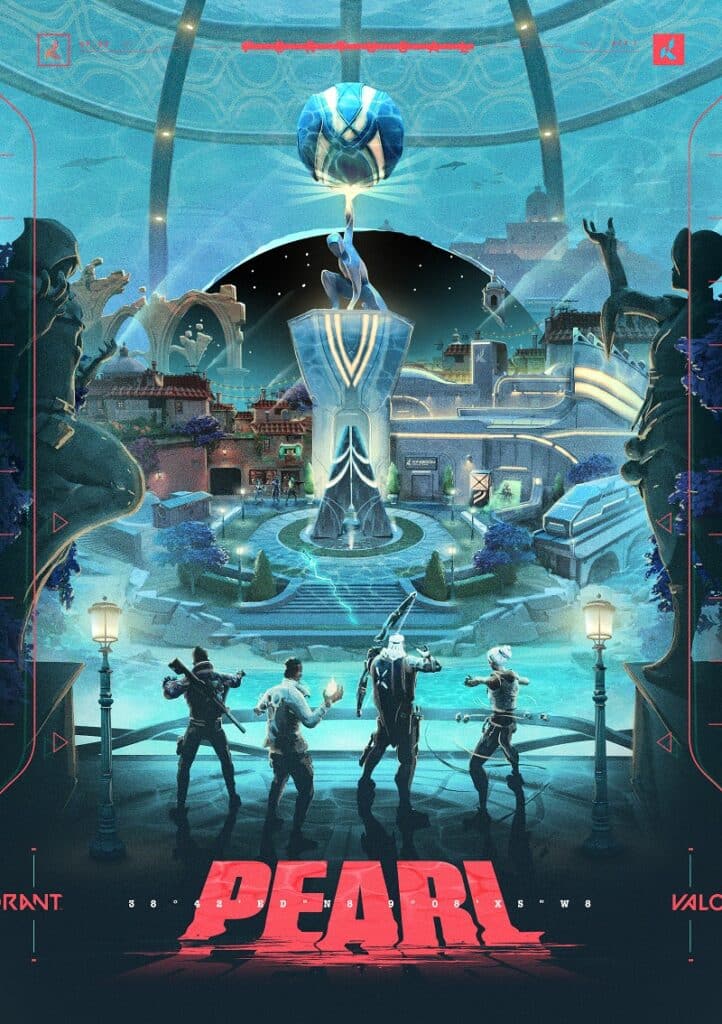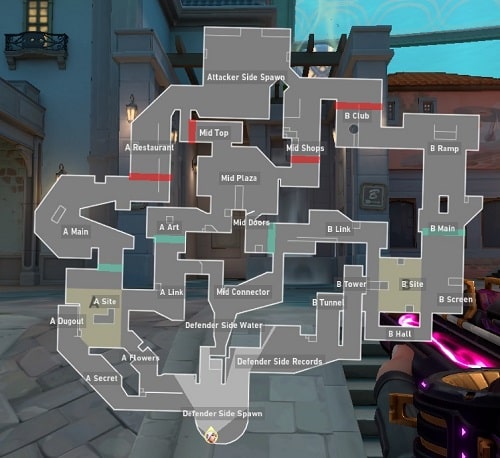Codenamed ‘Pitt’ Pearl is the eighth addition to the Valorant map pool. To be launched with Episode V ACT I, Pearl would replace Split in the Active map pool in Valorant. Riot released the early Beta, where the content creators were able to play the map and test it out with the New Skin Bundle ‘Prelude of Chaos’.

The map is set in Lisbon, Portugal, underwater on Omega Earth, where the Pearl is the kingdom’s answer to climate change. The map also includes a lot of Portuguese art from Lisbon and tries to mimic the city. The map is “A nice visual juxtaposition of Kingdom Industries structures with older structures of Portugal.”
Gameplay-wise, the map follows a classic, three-lane design, similar to all the older maps, somewhat reminiscing CSGO maps like Dust II, Inferno, etc., where the map can be easily divided into three parts, A, B, and Mid. Unlike the previous Valorant maps, Pearl is more traditional than its predecessors, without teleporters, doors, or ziplines. The map, though, while playing, is as complicated as any other map, if not more, With the map developers calling it “deceptively simple.”

The map provides extensive map control to the Defenders, with defenders almost covering 65% of the map while the attackers have to actively contest for map control. The importance of coordinated attacking is heavily emphasized on the map, especially if the defenders are holding passively. The attackers would have to work together to flush out the defenders, win the duels and then control the area before making any progress towards the site.
The map heavily promotes a slow and strategic approach to the game. With the number of angles to cover and clear, rushing to sites would be heavily frowned upon. Using multiple controllers would be a meta on the map, especially Omen and Astra, who have rechargeable smokes.
The map can easily be divided into two halves, and the ‘MID PLAZA’ serves as the divider for the map. Both sites have two entry points, one through mid and the other through individual site mains. Flanking would also play a massive role in the map design, and it’d make or break the round.
Raze would play a critical role on the map, with her utility helping to flush out defenders. Sova, won’t be as effective as the map has closed angles, and players can easily hide from the recon darts. The roles of the initiators would be crucial, especially on the attack, as they’d be crucial in clearing out angles and taking map control. Duelists like Jett, Reyna, Yoru, and Neon won’t be as effective. On the other hand, Phoenix can make a comeback on the map.
With the elongated mains on both the sites, Mid and B tower, Chamber’s operator would still be an essential part of the agent composition. Being as simplistic as it is, the map still is very intricate and would heavily rely on strategic takes and team play, and the winner of the game would depend on which team plays better with each other.
One good critic of the map is that it relies heavily on team play and might face backlash from Casuals. But the map would be one of the most exciting maps to watch in pro play. The map would debut in the LCQ, where teams with the strategic approach would choose to play Pearl to balance out the map pool.
The map sure is an exciting step forward. With valorant’s future in sight, the map is a clear indicator of how developers want the game to be played, and it is an exciting way, to say the least. Pearl would have its separate queue for the first two weeks post, which would be part of the regular map rotation.




